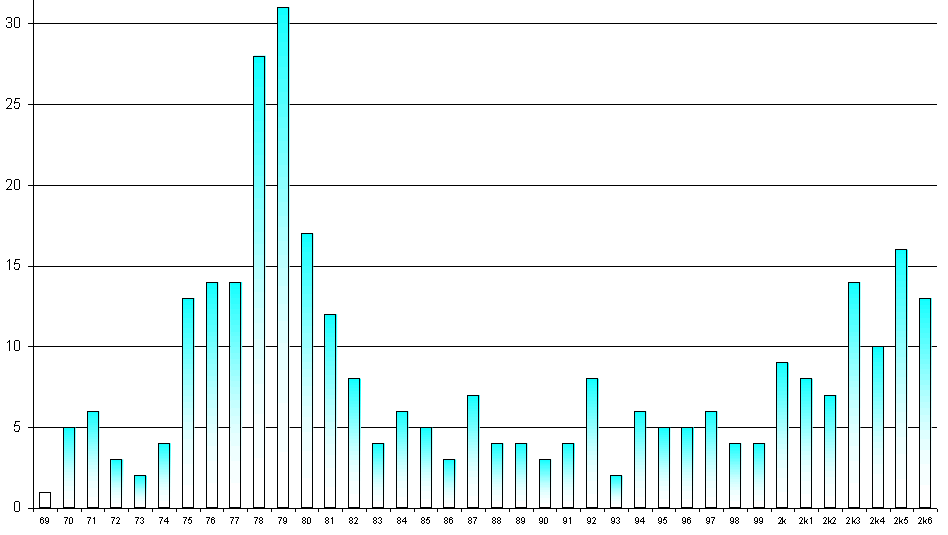|

The peak in the second half of the seventies is very remarkable, being
the actual golden age of the spanish progressive, delayed with respect to
the rest of the world in 5 years due to the political circumstances in the
country until 1975. In that time interval, tens of bands recorded and played
live all over the country (sometimes in front of tens of thousands
attendees) with the support of labels and communication media. When the
fashion vanished and the punk and new wave pushed hard from Europe, that was
over and then came the dark ages. Since then, prog has been mainly dead and
now a number of bands make interesant music trying to bring new life to the
genre, but without any aid from the established media and labels, becoming a
geniune underground current.
 The sub-genres
The sub-genres
The Spanish Prog, at least according to its most fruitful time
(1975-1982) was absolutely contaminated with other musical styles that
provided a unique and different sound. Regarding to that fact, four main
distinctive trends can be considered:
- Catalan progressive, also named rock laaietano; biased to
jazz rock, mainly looking at the fusion sound, with bands like
Iceberg, Gotic, Orquestra Mirasol, Secta Sónica, etc. Other bands
outside the catalan area practising this style, with their own accent from
their southern lands, were Guadalquivir or Imán. Follow this link for a rock laietano family
tree courtesy of Peter Huender.
- Prog from Madrid; influenced by a sound more "urban" and "hard",
less symphonic and more rocker, with bands like Asfalto, Ñu, etc.
- Andalusian prog; doped by flamenco-ish flavours. That was a
unique movement that provided a diferent and distinctive way of making
progressive rock. Sometimes less complex but always very personal with
bands like Triana, Cai, Medina Azahara, Imán, Guadalquivir, etc.
- Basque prog: very infuenced by folk, popular music, etc.
With acoustic trends, winds, and basque typical instruments, soft moods, and
usually female voices.
 The history after 82
The history after 82
After the golden age, most of the bands disappeared o reconverted their
sound in order to survive. The good times had converted a lot of musicians
into professionals, and then survive was a must. The solution was a change
of job, to work as a sessionist, or to change the band sound, adapting it to
the new market trends.
Among the first, there were a lot of musicians that abandoned music and now
they can not even imaging that here we are speaking about them; among the
second, great musicians as García de Diego (Canarios), Carles
Benavent (Música Urbana), Manuel Rodríguez (Imán),
Chano Domínguez (Cai), Josep Mas "Kitflus" (Iceberg), to name a few,
have collaborated with a lot of high commercial success musicians in Spain;
among the third, bands like Asfalto, Medina Azahara or Ñu opted
to harden their sound, approaching to heavy metal in order to survive.
A particular case is that of Teddy Bautista (keyboardist and leader of
Canarios), that became a producer (Triana for example), and now is the
President of the Spanish Society of Authors!
|

